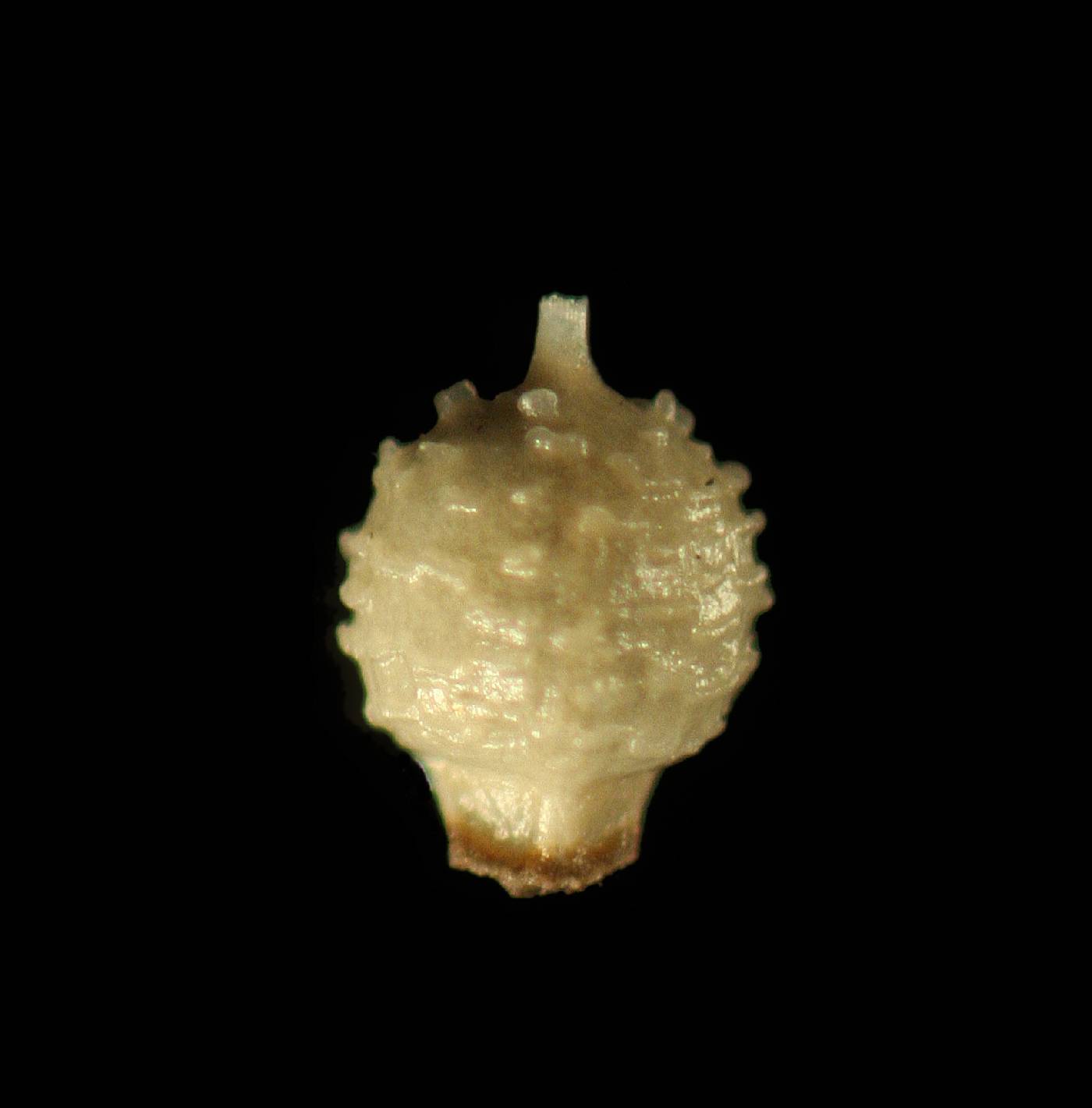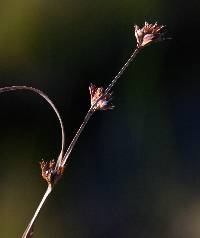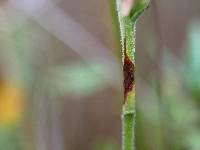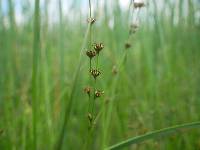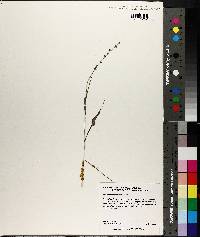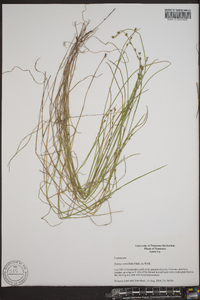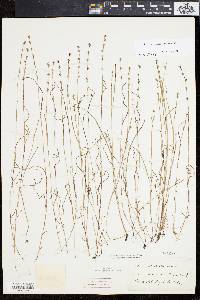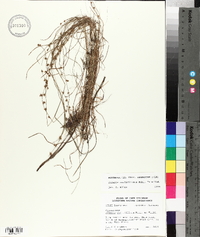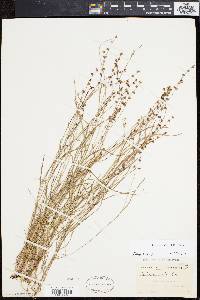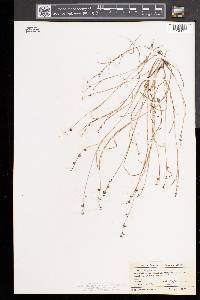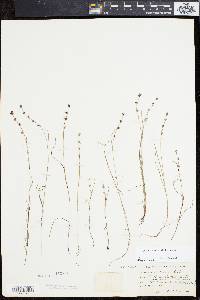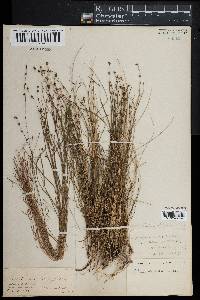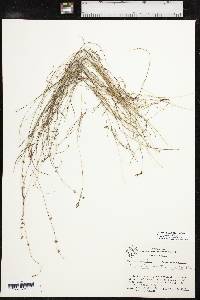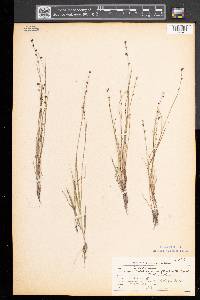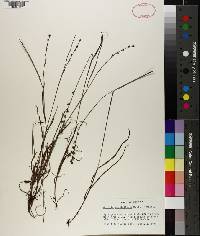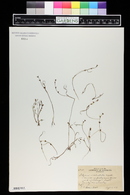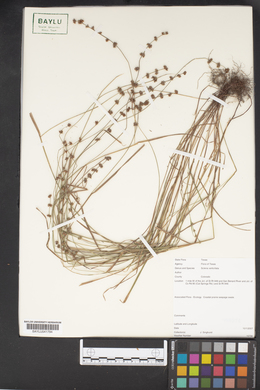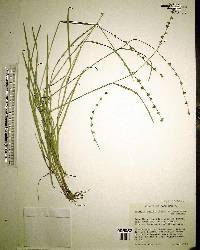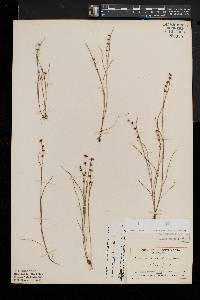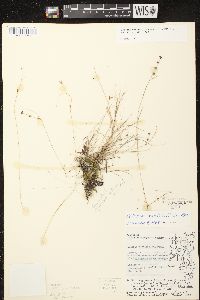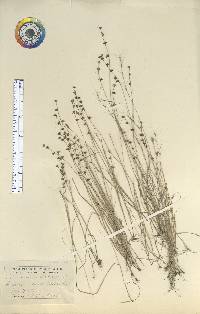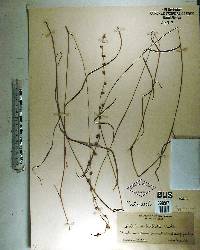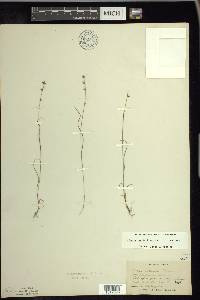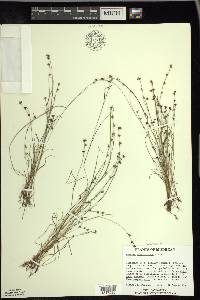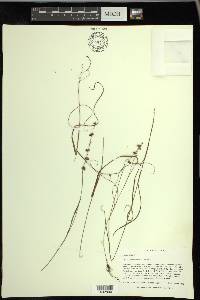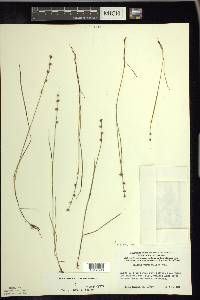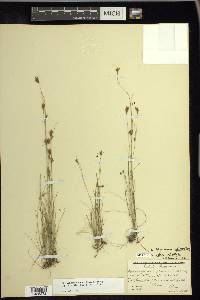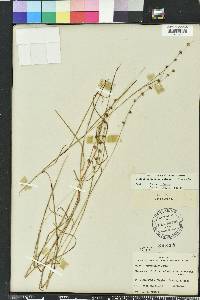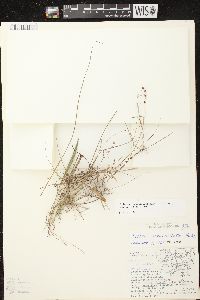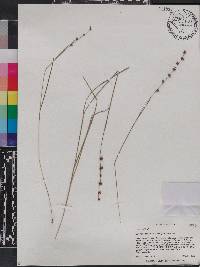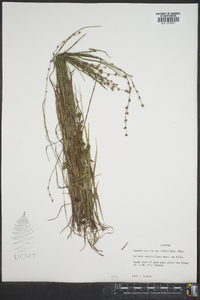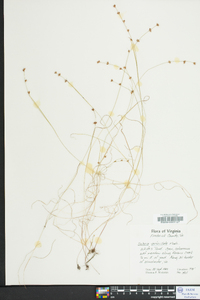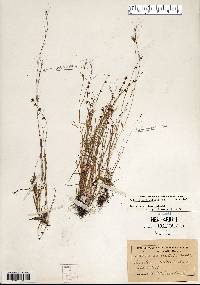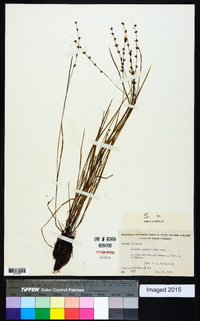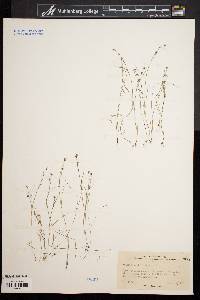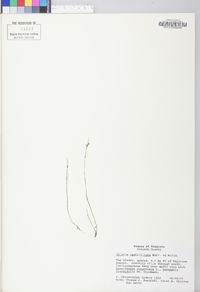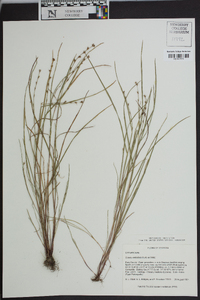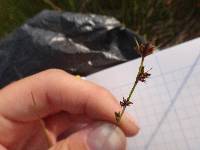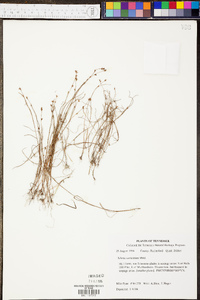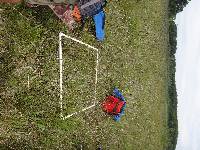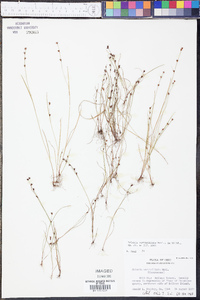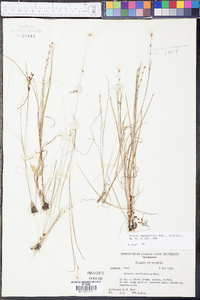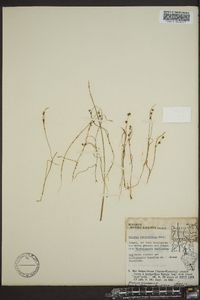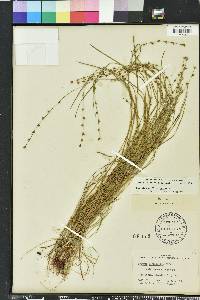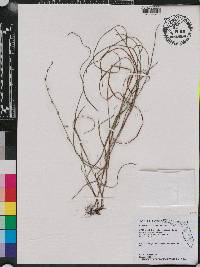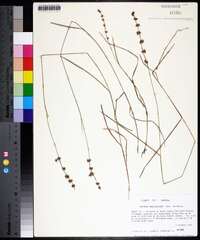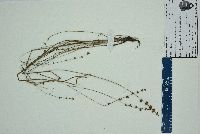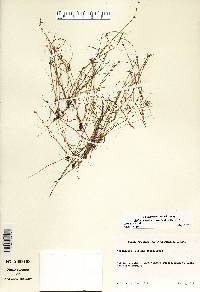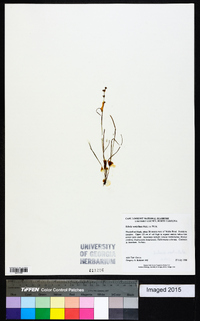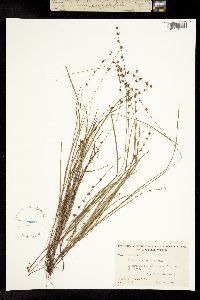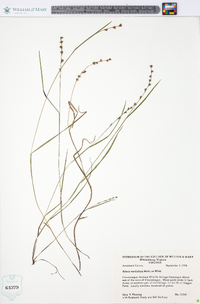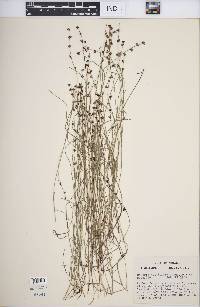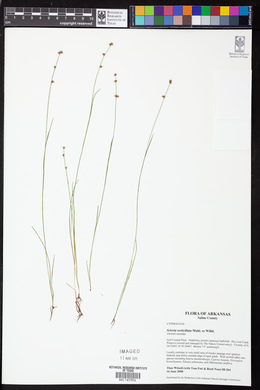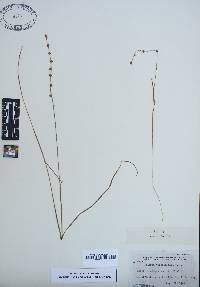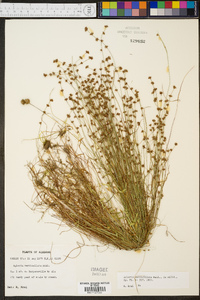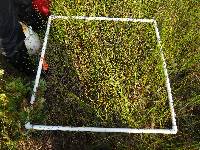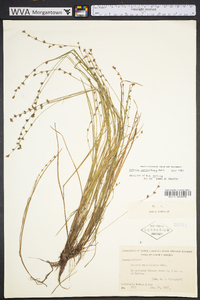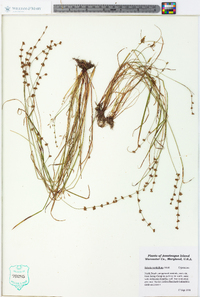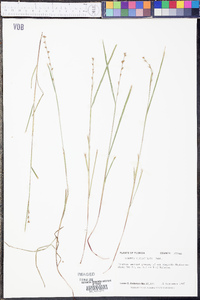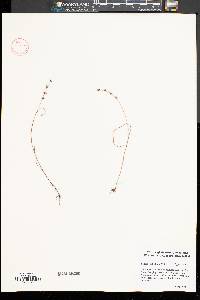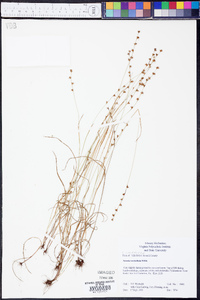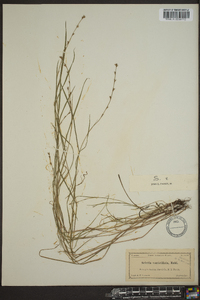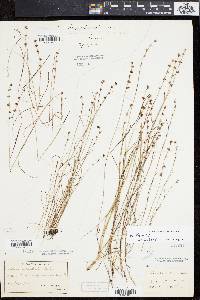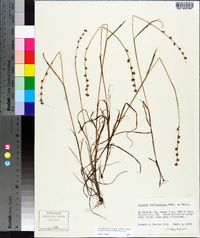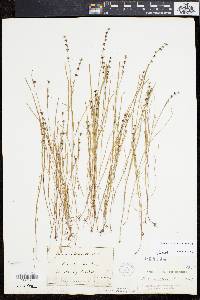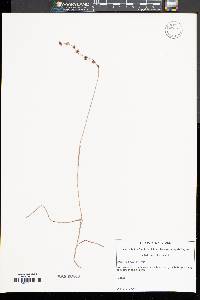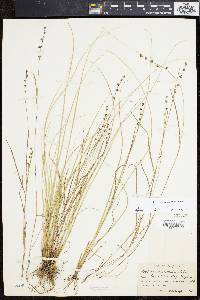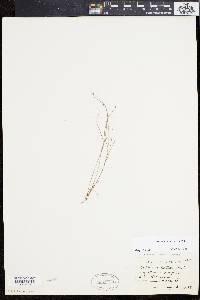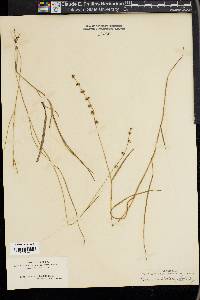
|
|
|
|
Family: Cyperaceae
Low Nut-Rush, more...low nutrush
|
Plants annual; rhizomes absent; roots reddish, fibrous. Culms solitary or in tufts, erect, slender, (7-) 10-60 cm, glabrous. Leaves: sheaths green or streaked with purple, smooth or weakly ribbed, usually narrowly winged, long-villous; contra-ligules minute; blades linear or filiform, plane or keeled, shorter than culms, 0.5-2 mm wide, glabrous. Inflorescences terminal, glomerate-spicate, 2.5-13 cm; glomerules 2-9, erect, brown, compact, 3-7 mm wide, each with 5-12(-15) spikelets; proximal glomerules occasionally on short, erect peduncles; rachis glabrous; bracts subtending inflorescence bristlelike, minutely ciliate or glabrous, inconspicuous. Spikelets bisexual, alternate, often appearing cyclic or whorled, 2-3(-4) mm; scales oblong-lanceolate. Achenes whitish or often gray or brownish or with dark interangular markings, trigonous-globose, 1-1.5(-1.9) mm, base trigonous, stipelike, short, narrowly constricted, and somewhat pitted or ribbed, apex distinctly mucronate, surface transversely tuberculate with quadrate ridges; hypogynium obsolete, represented by narrow brownish ridge at base of achene. Fruiting summer-fall. Wet, marly, sandy, or peaty soils in marshes, bogs, savannas, moist meadows, wet pinelands, and lakeshores; 0-400 m; Ont.; Ala., Ark., Conn., Del., Fla., Ga., Ill., Ind., Iowa, La., Md., Mich., Minn., Miss., Mo., N.J., N.Y., N.C., Ohio, Okla., Pa., S.C., Tenn., Tex., Va., Wis.; West Indies (Bahamas, Cuba). Scleria verticillata has very close affinities with S. hirtella and S. tenella Kunth. It is relatively wide-ranging, extending along the Gulf and Atlantic coasts and inland to the Great Lakes, where it remains a very distinct species. At its southern limit in the West Indies, it tends to merge with both S. hirtella and S. tenella, producing intermediate forms and blurring its specific boundaries.
Annual herb with reddish, fibrous roots 10 cm - 0.6 m tall Leaves: three-ranked. Sheaths green or streaked purple, often narrowly winged, sometimes weakly ribbed, long-hairy. Ligules minute. Blades stiff, 0.5 - 2 mm wide, shorter than culm, linear or thread-like, flat or keeled, midvein prominent. Inflorescence: a spike-like arrangement of two to nine glomerules (small, compact spikelet clusters), terminal, 2.5 - 13 cm long, subtended by small, bristle-like bracts. Glomerules upright, stalkless, brown, 3 - 7 mm wide, each bearing five to fifteen spikelets. The lowermost glomerules sometimes growing on short, upright stalks. Flowers: either male or female, borne on the same plant (monoecious), minute, subtended by a floral scale, lacking sepals and petals. Stamens one to three, exserted. Anthers 1 mm long. Pistil one. Style linear, two- to three-cleft. Fruit: a one-seeded achene, white to gray or brownish, 1 - 1.5 mm wide, spherical and three-sided with a constricted, three-sided base and an abruptly short-pointed apex, warty or transversely ridged. Culm: solitary or forming tufts, upright, slender, 10 cm - 0.6 m long, three-sided, solid. Spikelets: bisexual, alternate, frequently appearing whorled or cyclic, 2 - 4 mm long. Floral scales two-ranked, narrowly lance-shaped, keeled. Similar species: No information at this time. Flowering: late July to late September Habitat and ecology: Locally frequent in calcareous marshes, especially near Lake Michigan in the dune areas. It is also found in calcareous prairies. Occurence in the Chicago region: native Etymology: Scleria comes from the Greek word scleria, meaning hardness, referring to the fruit. Verticillata means "in whorls." Author: The Morton Arboretum Annual; very slender, 2-6 dm, often tufted; sheaths usually long- villous; main blades 1 mm wide; infl of 2-8 short, capitate cymes each 2-4 mm, sessile, subtended by inconspicuous bracts 4-7 mm, forming an erect interrupted spike; anthers 1 mm; scales glabrous, lanceolate, keeled; achene white, subglobose, 1 mm thick, conspicuously apiculate, verrucose or transversely ridged, constricted below to a short smooth hypogynium. Wet sandy soil; widespread in trop. Amer., n. to Conn. and Minn. Gleason, Henry A. & Cronquist, Arthur J. 1991. Manual of vascular plants of northeastern United States and adjacent Canada. lxxv + 910 pp. ©The New York Botanical Garden. All rights reserved. Used by permission. From Flora of Indiana (1940) by Charles C. Deam Infrequent to frequent in marly marshes throughout the lake area. It is rather inconspicuous and is often overlooked, although where it is found it usually forms a dense stand. The report by Core (Brittonia 2: 23. 1936) for Chase from Shelby County should be referred to Shelby, Lake County. Mrs. Chase wrote me that she had never collected in Shelby County. …… Indiana Coefficient of Conservatism: C = 10 Wetland Indicator Status: OBL |
|
|
|
This project was made possible in part by the Institute of Museum and Library Services [MG-70-19-0057-19].
Powered by Symbiota

